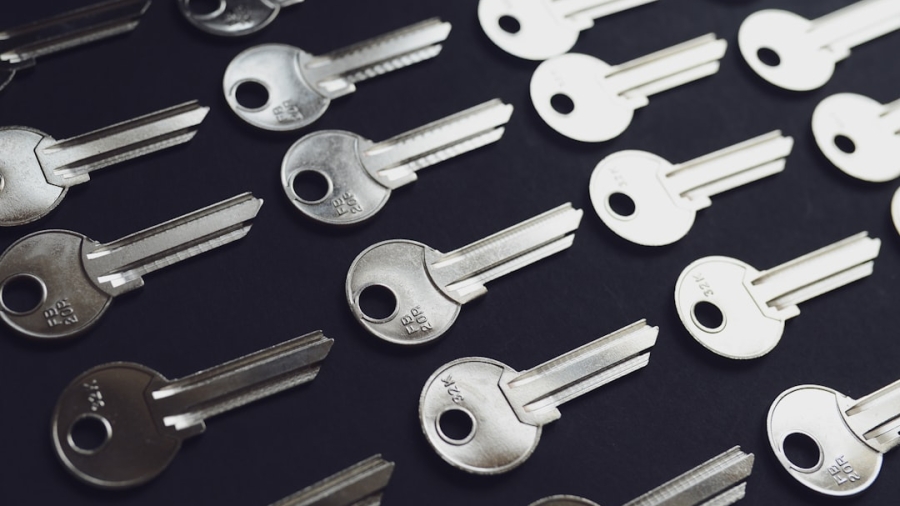Multi-Factor Authentication (MFA) is a security mechanism that requires users to provide two or more verification factors to gain access to a resource, such as an application, online account, or a virtual private network (VPN). This approach enhances security by adding additional layers of protection beyond just a username and password. The rationale behind MFA is simple: even if a malicious actor manages to obtain a user’s password, they would still need to bypass additional authentication methods to gain access.
This significantly reduces the likelihood of unauthorized access and helps safeguard sensitive information. The concept of MFA is rooted in the principle of defense in depth, which advocates for multiple layers of security to protect data and systems. By requiring various forms of identification, MFA ensures that even if one factor is compromised, the overall security of the system remains intact.
Commonly used factors include something the user knows (like a password), something the user has (such as a smartphone or hardware token), and something the user is (biometric data like fingerprints or facial recognition). The combination of these factors creates a robust security framework that is increasingly essential in today’s digital landscape.
Key Takeaways
- Multi-Factor Authentication (MFA) is a security measure that requires multiple forms of verification to grant access to an account or system.
- MFA is important because it adds an extra layer of security, making it harder for unauthorized users to access sensitive information.
- The types of factors in MFA include something you know (like a password), something you have (like a smartphone), and something you are (like a fingerprint).
- MFA works by requiring users to provide at least two different types of factors to verify their identity before granting access.
- The advantages of MFA include increased security, protection against unauthorized access, and compliance with industry regulations.
The Importance of Multi-Factor Authentication
Enhancing Security Against Cyber Threats
In an era where cyber threats are becoming increasingly sophisticated and prevalent, the importance of Multi-Factor Authentication cannot be overstated. With data breaches and identity theft on the rise, organizations and individuals alike are recognizing the need for stronger security measures. MFA serves as a critical line of defense against unauthorized access, ensuring that even if a password is compromised, additional verification steps are in place to thwart potential intruders.
Protecting Sensitive Information
This added layer of security is particularly vital for protecting sensitive information, such as financial data, personal identification details, and proprietary business information. Moreover, regulatory compliance is another driving force behind the adoption of MFA. Many industries are subject to strict regulations that mandate the protection of sensitive data. For instance, healthcare organizations must comply with the Health Insurance Portability and Accountability Act (HIPAA), while financial institutions are governed by the Gramm-Leach-Bliley Act (GLBA).
Demonstrating a Commitment to Security
Implementing MFA not only helps organizations meet these regulatory requirements but also demonstrates a commitment to safeguarding customer data. As cyber threats continue to evolve, the proactive adoption of MFA can significantly enhance an organization’s security posture and build trust with clients and stakeholders.
Types of Factors in Multi-Factor Authentication

Multi-Factor Authentication relies on various types of factors to verify a user’s identity. These factors can be broadly categorized into three main types: knowledge-based factors, possession-based factors, and inherence-based factors. Knowledge-based factors are something the user knows, such as passwords or personal identification numbers (PINs).
While these are commonly used, they can be vulnerable to phishing attacks or brute-force attempts, making them less reliable when used alone. Possession-based factors require users to have something in their possession to authenticate their identity. This could include a smartphone that receives a one-time code via SMS or an authenticator app, or a physical hardware token that generates time-sensitive codes.
Inherence-based factors involve biometric verification methods, such as fingerprint scans, facial recognition, or voice recognition. These factors are unique to each individual and are increasingly being adopted due to their high level of security. By combining these different types of factors, organizations can create a multi-layered approach to authentication that significantly enhances overall security.
How Multi-Factor Authentication Works
The process of Multi-Factor Authentication typically begins when a user attempts to log into an account or access a secure resource. Initially, the user enters their username and password as the first layer of authentication. Upon successful entry of these credentials, the system prompts the user for an additional verification factor.
This could involve sending a one-time code to the user’s registered mobile device or requiring them to provide biometric data. The user must then complete this second step before gaining access. Once the user submits the additional factor, the system verifies it against what is stored in its database.
If both the initial credentials and the second factor are validated successfully, access is granted. If either step fails, access is denied, thereby preventing unauthorized users from breaching the system. This multi-step process not only enhances security but also provides users with peace of mind knowing that their accounts are better protected against potential threats.
Advantages of Multi-Factor Authentication
The advantages of Multi-Factor Authentication extend beyond just enhanced security; they also encompass improved user confidence and reduced risk of data breaches. One of the most significant benefits is that it dramatically decreases the chances of unauthorized access. Even if a password is stolen through phishing or other means, an attacker would still need to bypass additional authentication methods, which can be much more challenging.
This layered approach effectively mitigates risks associated with weak passwords and human error. Furthermore, implementing MFA can lead to increased user trust and satisfaction. When users know that their accounts are protected by multiple layers of security, they are more likely to engage with services and share sensitive information without fear of compromise.
Additionally, organizations that adopt MFA often find themselves better positioned in terms of compliance with industry regulations and standards. By demonstrating a commitment to robust security practices, businesses can enhance their reputation and foster stronger relationships with customers and partners.
Common Misconceptions about Multi-Factor Authentication

Debunking the Complexity Myth
One common myth is that MFA is overly complicated and burdensome for users. While it is true that adding extra steps can introduce some friction into the login process, many modern MFA solutions are designed with user experience in mind. For instance, biometric authentication methods like fingerprint scanning or facial recognition offer quick and seamless verification without requiring users to remember additional codes or passwords.
The Illusion of Complete Security
Another misconception is that MFA guarantees complete security. While it significantly enhances protection against unauthorized access, it is not infallible. Cybercriminals are continually developing new tactics to bypass security measures, including sophisticated social engineering attacks that can trick users into revealing their authentication factors.
A Comprehensive Security Strategy
Therefore, while MFA is an essential component of a comprehensive security strategy, it should be complemented by other best practices such as regular software updates, employee training on cybersecurity awareness, and robust incident response plans. By adopting a multi-layered approach to security, organizations can better protect themselves against the ever-evolving threat landscape.
Implementing Multi-Factor Authentication in Your Organization
Implementing Multi-Factor Authentication within an organization requires careful planning and consideration to ensure a smooth transition and effective deployment. The first step involves assessing the specific needs and risks associated with the organization’s operations. This includes identifying which systems and applications require MFA based on their sensitivity and the potential impact of unauthorized access.
Engaging stakeholders from various departments can provide valuable insights into how MFA can be integrated into existing workflows without causing significant disruptions. Once the needs assessment is complete, organizations should select an appropriate MFA solution that aligns with their requirements and budget. There are numerous options available in the market, ranging from SMS-based authentication to more advanced biometric systems.
It’s crucial to consider factors such as ease of use, scalability, and compatibility with existing systems when making this decision. After selecting a solution, organizations should conduct thorough testing before rolling it out organization-wide. Providing training sessions for employees on how to use MFA effectively will also help ensure a successful implementation and foster a culture of security awareness.
Best Practices for Using Multi-Factor Authentication
To maximize the effectiveness of Multi-Factor Authentication, organizations should adhere to several best practices that enhance both security and user experience. First and foremost, it’s essential to educate employees about the importance of MFA and how it works. Regular training sessions can help reinforce good security habits and ensure that users understand how to respond if they encounter issues during the authentication process.
Additionally, organizations should regularly review and update their MFA policies to adapt to evolving threats and technological advancements. This includes monitoring for any potential vulnerabilities in the chosen authentication methods and being open to adopting newer technologies as they become available. Furthermore, organizations should consider implementing adaptive authentication techniques that assess risk levels based on user behavior or location before requiring additional verification steps.
By following these best practices, organizations can create a robust security environment that effectively leverages Multi-Factor Authentication while minimizing potential disruptions for users.
For those interested in enhancing their cybersecurity measures, understanding the basics of Multi-Factor Authentication (MFA) is crucial. MFA adds an extra layer of security by requiring multiple forms of verification before granting access to an account, which significantly reduces the risk of unauthorized access. To further explore how technology trends are evolving, including the adoption and integration of MFA across various platforms, you might find the article on predicted technology trends for 2023 insightful. You can read more about it by visiting What Trends Are Predicted for 2023. This article provides a broader context on how MFA and other security measures are becoming integral in the technological landscape.
FAQs
What is multi-factor authentication (MFA)?
Multi-factor authentication (MFA) is a security process that requires more than one method of authentication from independent categories of credentials to verify the user’s identity for a login or other transaction.
What are the different factors used in multi-factor authentication?
The factors used in multi-factor authentication typically include something the user knows (such as a password or PIN), something the user has (such as a smartphone or security token), and something the user is (such as a fingerprint or facial recognition).
How does multi-factor authentication enhance security?
Multi-factor authentication enhances security by adding an extra layer of protection beyond just a password. Even if a hacker manages to obtain a user’s password, they would still need the additional factor (such as a smartphone or fingerprint) to gain access.
What are some common methods of multi-factor authentication?
Common methods of multi-factor authentication include SMS or email verification codes, biometric authentication (such as fingerprint or facial recognition), hardware tokens, and mobile authenticator apps.
Is multi-factor authentication necessary for all users and applications?
While multi-factor authentication is not always necessary for all users and applications, it is highly recommended for securing sensitive data, financial transactions, and privileged accounts. It adds an extra layer of protection against unauthorized access.

